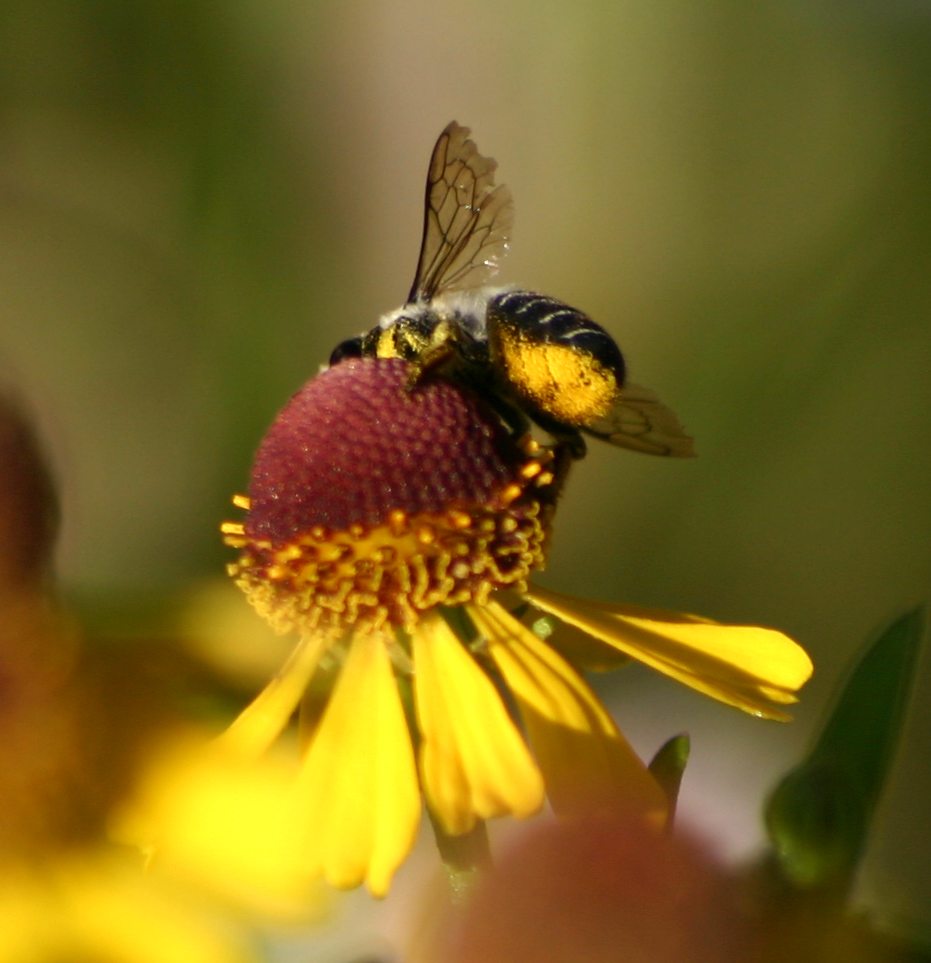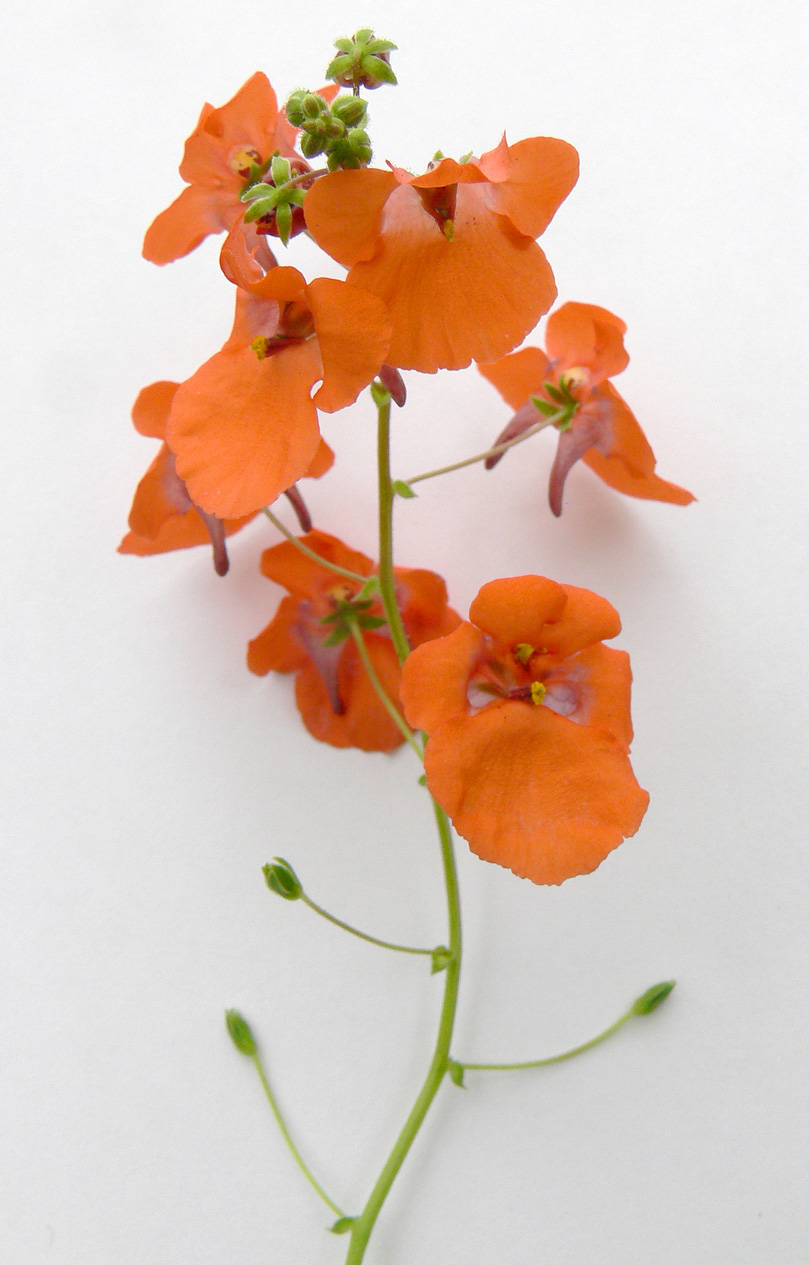|
Melittinae
Melittinae is a small melittid subfamily, with some 60 species in four genera, restricted to Africa and the northern temperate zone. They are typically small to moderate-sized bees, which often have shaggy scopae, and are commonly oligolectic The term oligolecty is used in pollination ecology to refer to bees that exhibit a narrow, specialized preference for pollen sources, typically to a single family or genus of flowering plants. The preference may occasionally extend broadly to mult ...; several species further specialize on floral oils as larval food rather than pollen, including '' Rediviva emdeorum'', a highly unusual species in which the forelegs are longer than the entire body, and used to sponge up the floral oil at the end of elongated corolla spurs of the host plant, '' Diascia''. The Melittinae are known from a fossil of ''Palaeomacropis eocenicus'' in the Early Eocene of Oise, France. References External links Online guides to eastern North American Melittidae ... [...More Info...] [...Related Items...] OR: [Wikipedia] [Google] [Baidu] |
Rediviva
''Rediviva'' is a genus of bees in the Melittidae Melittidae is a small bee family, with over 200 described species in three subfamilies. The family has a limited distribution, with all described species restricted to Africa and the northern temperate zone. Fossil melittids have been found oc ... family endemic to South Africa. Species * '' Rediviva albifasciata'' Whitehead & Steiner, 1994 * '' Rediviva alonsoae'' Whitehead & Steiner, 2001 * '' Rediviva aurata'' Whitehead & Steiner, 2001 * '' Rediviva bicava'' Whitehead & Steiner, 2001 * '' Rediviva colorata'' Michener, 1981 * '' Rediviva emdeorum'' Vogel & Michener, 1985 * '' Rediviva gigas'' Whitehead & Steiner, 1993 * '' Rediviva intermedia'' Whitehead & Steiner, 2001 * '' Rediviva intermixta'' (Cockerell, 1934) * '' Rediviva longimanus'' Michener, 1981 * '' Rediviva macgregori'' Whitehead & Steiner, 2001 * '' Rediviva micheneri'' Whitehead & Steiner, 2001 * '' Rediviva neliana'' Cockerell, 1931 * '' Rediviva nitida'' Wh ... [...More Info...] [...Related Items...] OR: [Wikipedia] [Google] [Baidu] |
Melittidae
Melittidae is a small bee family, with over 200 described species in three subfamilies. The family has a limited distribution, with all described species restricted to Africa and the northern temperate zone. Fossil melittids have been found occasionally in Eocene amber deposits, including those of Oise, France and the Baltic amber. Evolution Early molecular work suggested that the family Melittidae was sister to all other bees, and also that it was paraphyletic. Because of this finding, it was suggested that the three subfamilies of Melittidae should be elevated to family status. Neither study included many melittids, due to their rarity. Later studies suggested that the family could still be monophyletic and a 2013 investigation including a greater number of melittid bees further supports this. Recent research has shown that Melittids have a lower extinction rate compared to other hymenopterans, yet this family is considered species-poor. This is attributed to a significantl ... [...More Info...] [...Related Items...] OR: [Wikipedia] [Google] [Baidu] |
Rediviva Emdeorum
''Rediviva'' is a genus of bees in the Melittidae family endemic to South Africa. Species * ''Rediviva albifasciata'' Whitehead & Steiner, 1994 * '' Rediviva alonsoae'' Whitehead & Steiner, 2001 * '' Rediviva aurata'' Whitehead & Steiner, 2001 * '' Rediviva bicava'' Whitehead & Steiner, 2001 * '' Rediviva colorata'' Michener, 1981 * '' Rediviva emdeorum'' Vogel & Michener, 1985 * ''Rediviva gigas'' Whitehead & Steiner, 1993 * '' Rediviva intermedia'' Whitehead & Steiner, 2001 * '' Rediviva intermixta'' (Cockerell, 1934) * '' Rediviva longimanus'' Michener, 1981 * ''Rediviva macgregori'' Whitehead & Steiner, 2001 * ''Rediviva micheneri'' Whitehead & Steiner, 2001 * ''Rediviva neliana'' Cockerell, 1931 * ''Rediviva nitida'' Whitehead & Steiner, 2001 * ''Rediviva pallidula'' Whitehead & Steiner, 1992 * ''Rediviva parva'' Whitehead & Steiner, 2001 * ''Rediviva peringueyi'' (Friese, 1911) * ''Rediviva ruficornis'' Whitehead & Steiner, 2001 * ''Rediviva rufipes'' (Friese, 1913) * ''Re ... [...More Info...] [...Related Items...] OR: [Wikipedia] [Google] [Baidu] |
Macropis
''Macropis'' is a genus of bees in the family Melittidae. Description ''Macropis'' species are of moderate size, not exceeding 15 mm. They have a livery predominantly black; males are characterized by conspicuous yellow markings on the head, but the females show morphological adaptations related to their foraging habits of flower oils, posterior tibiae with very developed, covered with a dense velvety hairs. Unlike most Melittidae, the wing has only two submarginal cells. Biology They are solitary bees that dig their nests in the ground. Most species are oligolectic and feed on pollen and floral oils of ''Lysimachia'' spp. They make a single generation per year. The males emerge from the ground in spring, just before the females, and await the females in the vicinity of the flowers of the host plant. After mating, the females dig a nest in the ground, ending with one or two rooms in which is collected the pollen, which is placed on the egg. The larvae, feeding on the poll ... [...More Info...] [...Related Items...] OR: [Wikipedia] [Google] [Baidu] |
Melitta (genus)
''Melitta'' is a genus of bees in the family Melittidae. It includes about 40 species restricted to Africa and the northern temperate zone. Most of the species are Palaearctic, though three rare species occur in North America. They are bees of moderate size, generally 8 to 15 mm long. They are commonly oligolectic, with narrow host plant preferences. They resemble bees of the genus ''Andrena'', though with radically different mouthparts and a scopa limited to the hind tibia and basitarsus. Melitta have a crucial role as pollinators and they are protected through the Pollinators policy based on EU Biodiversity Strategy 2030. Species * '' Melitta aegyptiaca'' (Radoszkowski, 1891) * '' Melitta albida'' Cockerell, 1935 * '' Melitta americana'' (Smith, 1853) * '' Melitta arrogans'' (Smith, 1879) * '' Melitta barbarae'' Eardley, 2006 * ''Melitta bicollaris'' Warncke, 1973 * '' Melitta budashkini'' Radchenko & Ivanov, 2012 * '' Melitta budensis'' (Mocsáry, 1878) * '' Melitta ... [...More Info...] [...Related Items...] OR: [Wikipedia] [Google] [Baidu] |
Africa
Africa is the world's second-largest and second-most populous continent, after Asia in both cases. At about 30.3 million km2 (11.7 million square miles) including adjacent islands, it covers 6% of Earth's total surface area and 20% of its land area.Sayre, April Pulley (1999), ''Africa'', Twenty-First Century Books. . With billion people as of , it accounts for about of the world's human population. Africa's population is the youngest amongst all the continents; the median age in 2012 was 19.7, when the worldwide median age was 30.4. Despite a wide range of natural resources, Africa is the least wealthy continent per capita and second-least wealthy by total wealth, behind Oceania. Scholars have attributed this to different factors including geography, climate, tribalism, colonialism, the Cold War, neocolonialism, lack of democracy, and corruption. Despite this low concentration of wealth, recent economic expansion and the large and young population make Afr ... [...More Info...] [...Related Items...] OR: [Wikipedia] [Google] [Baidu] |
Scopa (biology)
A scopa (plural scopae; Latin for "broom") is any of a number of different modifications on the body of a non-parasitic bee that form a pollen-carrying apparatus. In most species of bees, the scopa is simply a dense mass of elongated, often branched, hairs (or setae) on the hind leg. When present on the hind legs, the modified hairs are, at a minimum, on the tibia, but some bees also have modified hairs on the femur and/or trochanter. A few bees have, in addition to the leg hairs, many modified hairs on the ventral surface of the abdomen which are also used in pollen transport; one family of bees, the Megachilidae, lack modified leg hairs, but have an extensive scopa on the underside of the abdomen (see photo). Honey bees and bumblebees have a more highly-developed structure than the scopa: the corbicula, or pollen basket. Various species of bees have other types of modified hairs that collect pollen, floral oils, or other chemicals from plants; such hairs may be borne on the fa ... [...More Info...] [...Related Items...] OR: [Wikipedia] [Google] [Baidu] |
Oligolectic
The term oligolecty is used in pollination ecology to refer to bees that exhibit a narrow, specialized preference for pollen sources, typically to a single family or genus of flowering plants. The preference may occasionally extend broadly to multiple genera within a single plant family, or be as narrow as a single plant species. When the choice is very narrow, the term ''monolecty'' is sometimes used, originally meaning a single plant species but recently broadened to include examples where the host plants are related members of a single genus. The opposite term is '' polylectic'' and refers to species that collect pollen from a wide range of species. The most familiar example of a polylectic species is the domestic honey bee. Oligolectic pollinators are often called oligoleges or simply specialist pollinators, and this behavior is especially common in the bee families Andrenidae and Halictidae, though there are thousands of species in hundreds of genera, in essentially all known ... [...More Info...] [...Related Items...] OR: [Wikipedia] [Google] [Baidu] |
Diascia (plant)
''Diascia'' is a genus of around 70 species of herbaceous plant, herbaceous annual plant, annual and perennial plant, perennial flowering plants of the family (biology), family Scrophulariaceae, native plant, native to southern Africa, including South Africa, Lesotho and neighbouring areas. The perennial species are found mainly in summer-rainfall areas such as the KwaZulu-Natal Drakensberg; about 50 species, mostly annuals, are found in the Western Cape and Namaqualand, winter rainfall areas. Their common name is twinspur, in reference to the two (usually downward-pointing) spurs to be found on the back of the flower. These help to distinguish them from the similar (and closely related) genera ''Alonsoa'' and ''Nemesia (plant), Nemesia''. The spurs contain a special oil, which is collected in the wild by bees of the genus ''Rediviva'' (e.g. ''R. longimanus'') that appear to have coevolved with the plants, as they have unusually long forelegs for collecting the oil. [...More Info...] [...Related Items...] OR: [Wikipedia] [Google] [Baidu] |



